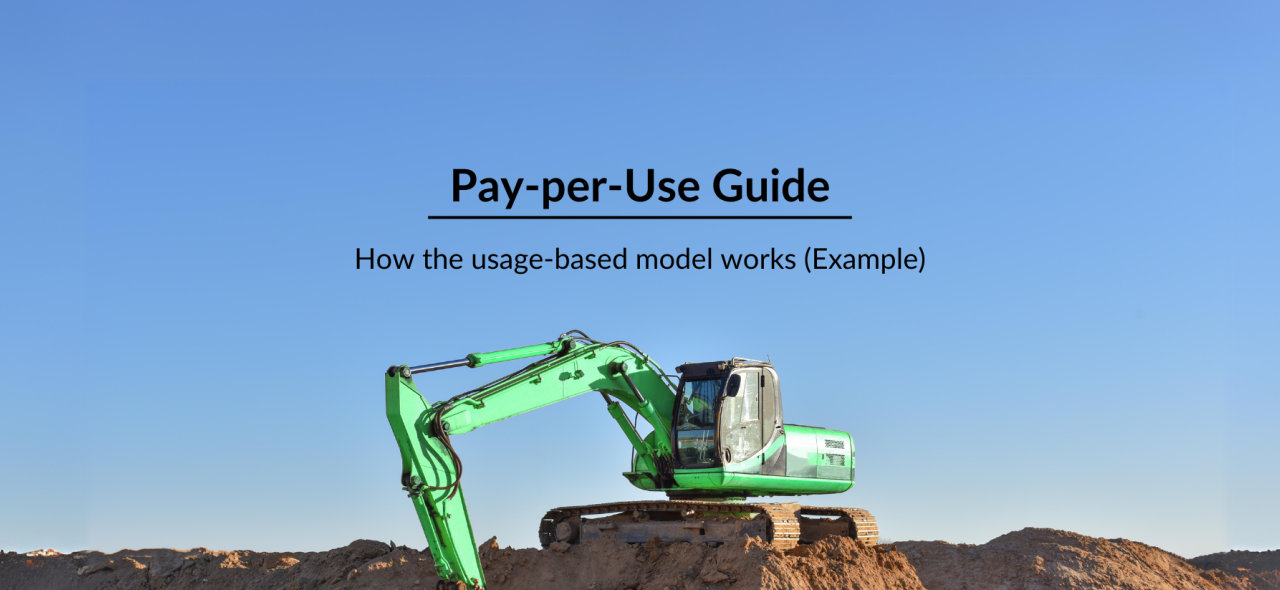Pay-per-Use Guide - How the usage-based model works (Example)
How Pay-per-Use works
„Pay only upon usage.“
Let's look at the example of a car purchase through traditional leasing for comparison: fixed monthly costs are incurred regardless of the actual usage of the car. In an industrial context, this can be problematic if, due to changing market conditions (e.g. lower demand), usage is lower than expected and financing of a car, or equipment remains the same, creating a high financial burden for companies.
Pay-per-Use solves this problem by linking payments to actual usage of the equipment, without hidden costs or penalties for lower usage. This increases flexibility in liquidity management by reducing fixed costs, especially when demand falls.
In short, Pay-per-Use allows for an alignment of costs with usage: You only pay when you actually use the machine!
What are the advantages of Pay-per-Use
Due to rapid changes in business conditions, financing solutions are more important than ever for companies. Pay-per-Use can help equipment operators find a common denominator for financial, flexibility, or investment barrier considerations. The following four advantages are currently most appreciated by operators:
Equipment operators...
...only pay when the machine is actually used.
...convert high upfront investments (CAPEX) into ongoing operating costs (OPEX).
...can treat equipment off-balance sheet (under IFRS 16).
...can bypass investment hurdles to replace their old machines.
Disadvantages of Pay-per-Use
To fully understand Pay-per-Use, it is important to consider both advantages and disadvantages. The following disadvantages may apply to some:
No full ownership rights:
In the Pay-per-Use model, the operator does not acquire full ownership rights for the machine.
Higher costs at maximum utilisation:
Pay-per-Use offers flexibility in the event of fluctuating demand, but total costs for consistently high usage are higher than, for example, with a direct purchase. This is due to the utilisation risk transferred to Linxfour, which must be considered in the usage fees.
Lower depreciation:
Pay-per-Use lease payments are generally recognised as operating costs. These are accounted for before EBITDA (Earnings Before Interest, Taxes, Depreciation and Amortization) and the lower depreciation reduces the EBITDA figure. This can be a disadvantage for companies using this metric to guide business decisions.
Recap
For these companies Pay-per-Use is particularly suitable
Companies following IFRS accounting standards:
These companies do not want to have equipment on their balance sheet, as they may wish to lower their debt ratio. Typically, this includes large listed companies or companies held by private equity investors.
Companies with CAPEX constraints:
There are two sub-categories here. First, those who want to speed up investment decisions, either because internal decision-making processes for investments are lengthy or because decisions are made in parent companies abroad. Typically, OPEX is signed off with simpler decision-making processes, especially when sat with local subsidiaries. The second sub-category are companies that have exhausted their CAPEX budget and need to realise investment projects via OPEX.
Companies with seasonal or uncertain sales forecasts:
Companies that introduce a new product and are uncertain about actual market demand benefit from Pay-per-Use, as they can adjust their expenses directly to actual orders and revenues. This group may include companies of any size in industries such as food and beverage, textiles and apparel, woodworking and furniture, intralogistics, e-commerce, agriculture, and many more.
Innovative companies:
These companies want to utilise the latest generation of machines without bearing the risk of technology and innovation. Pay-per-Use allows them to return old machines after a short period of use and switch to newer models. This is particularly beneficial for companies operating in a fast-paced market environment.
If you wish to know how Pay-per-Use may suit your company, contact us using the contact function. We will advise you on whether Pay-per-Use makes sense for your company and product range.

